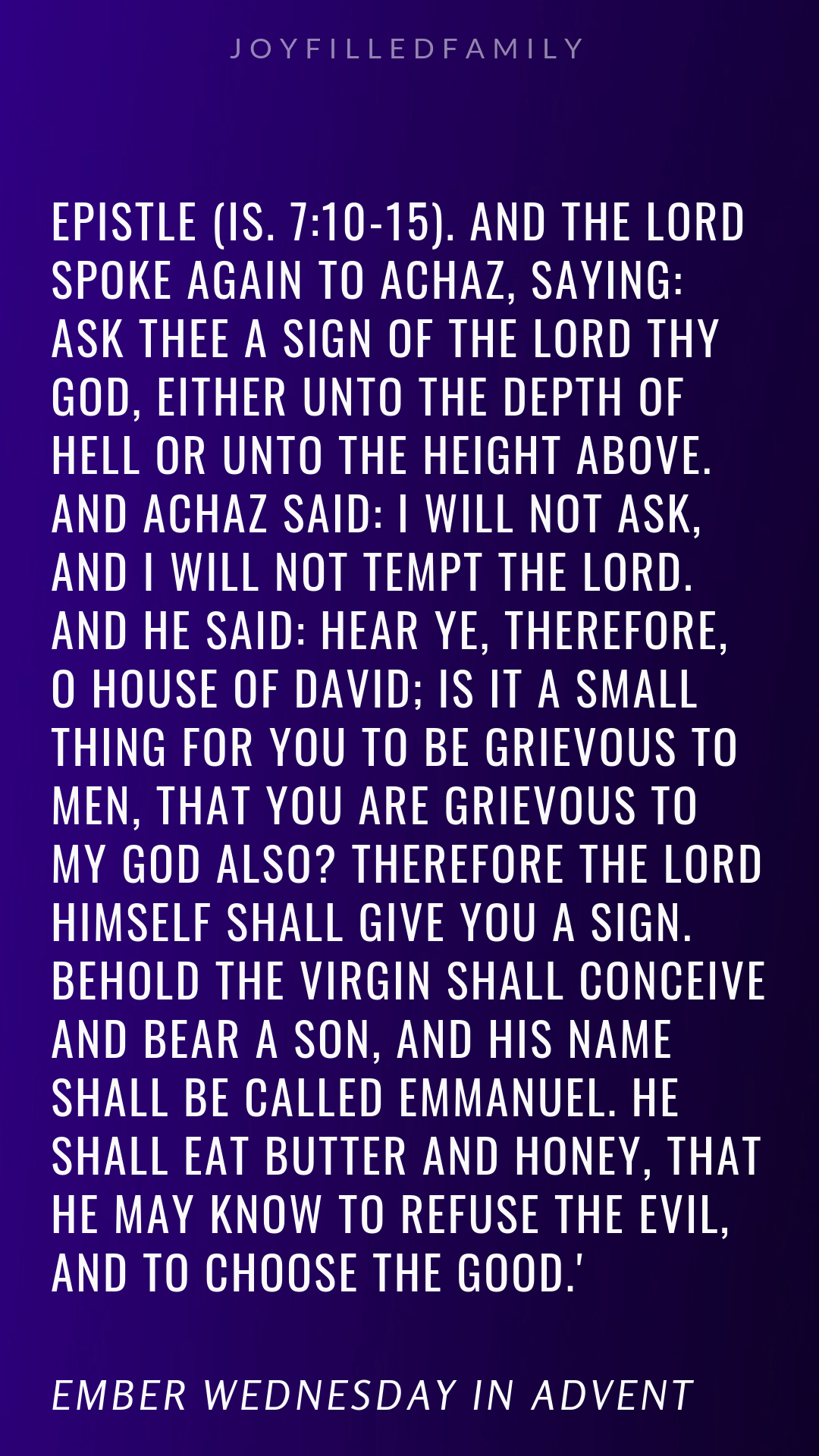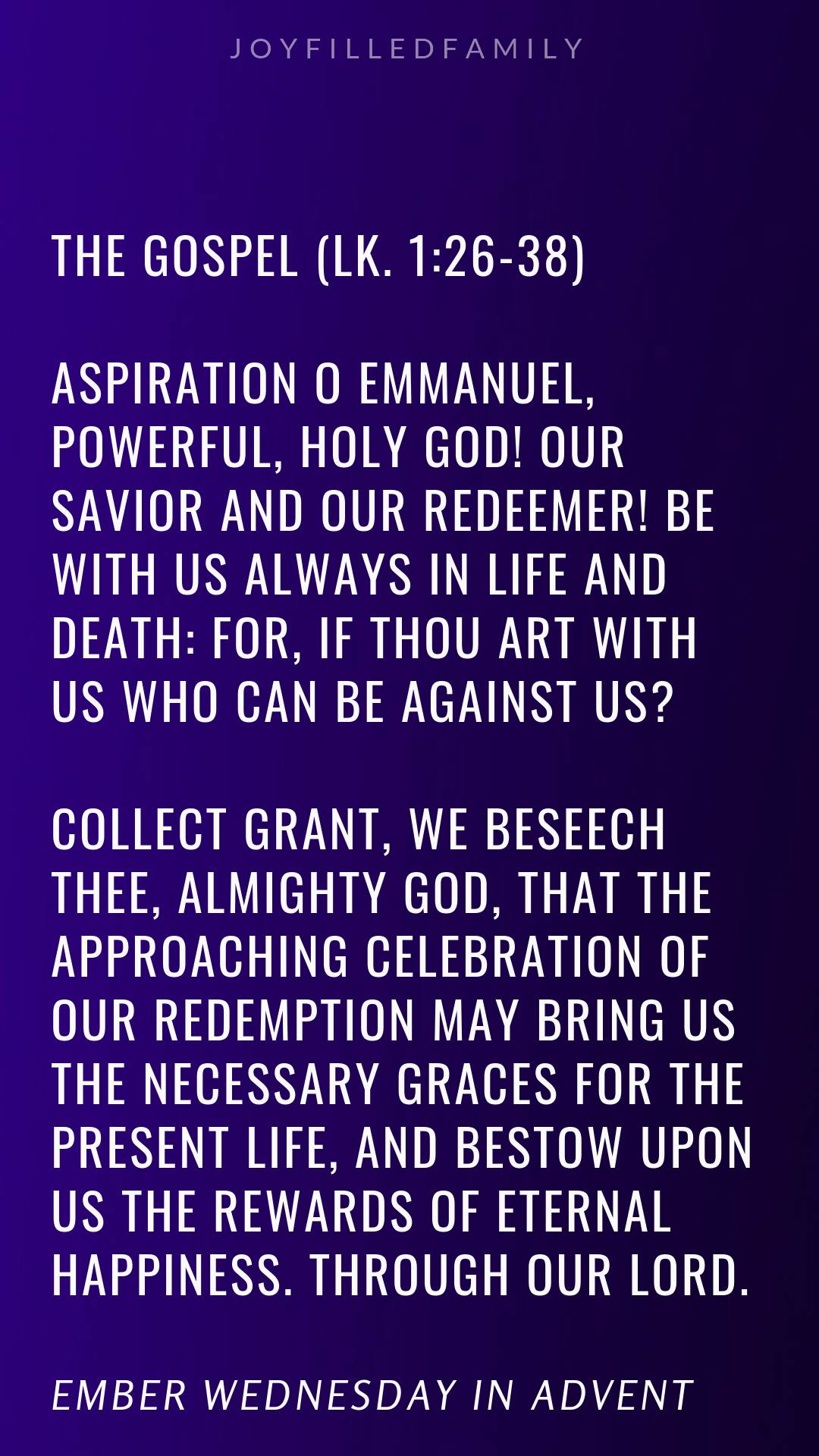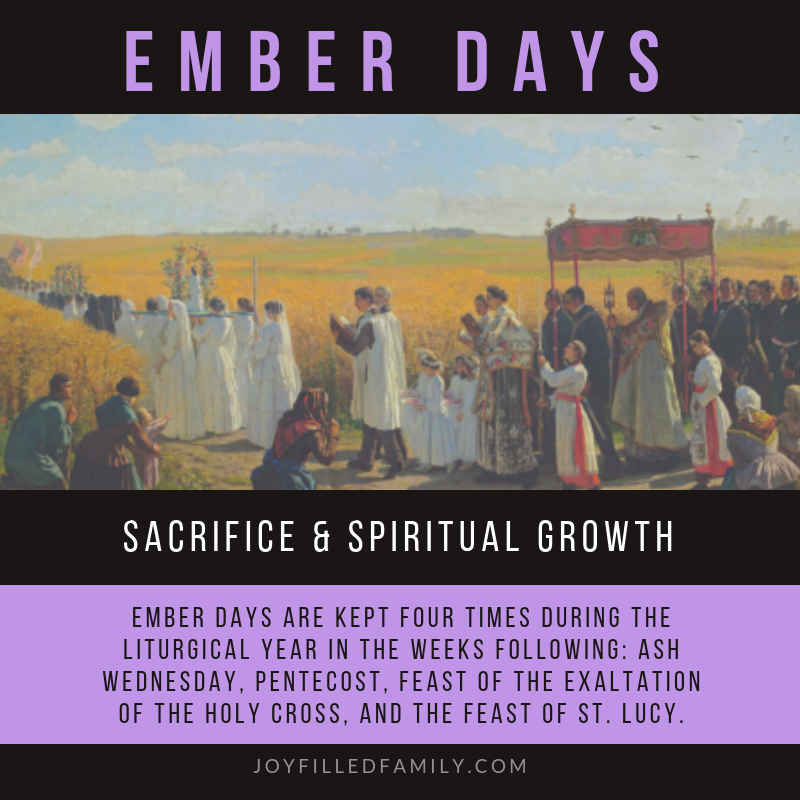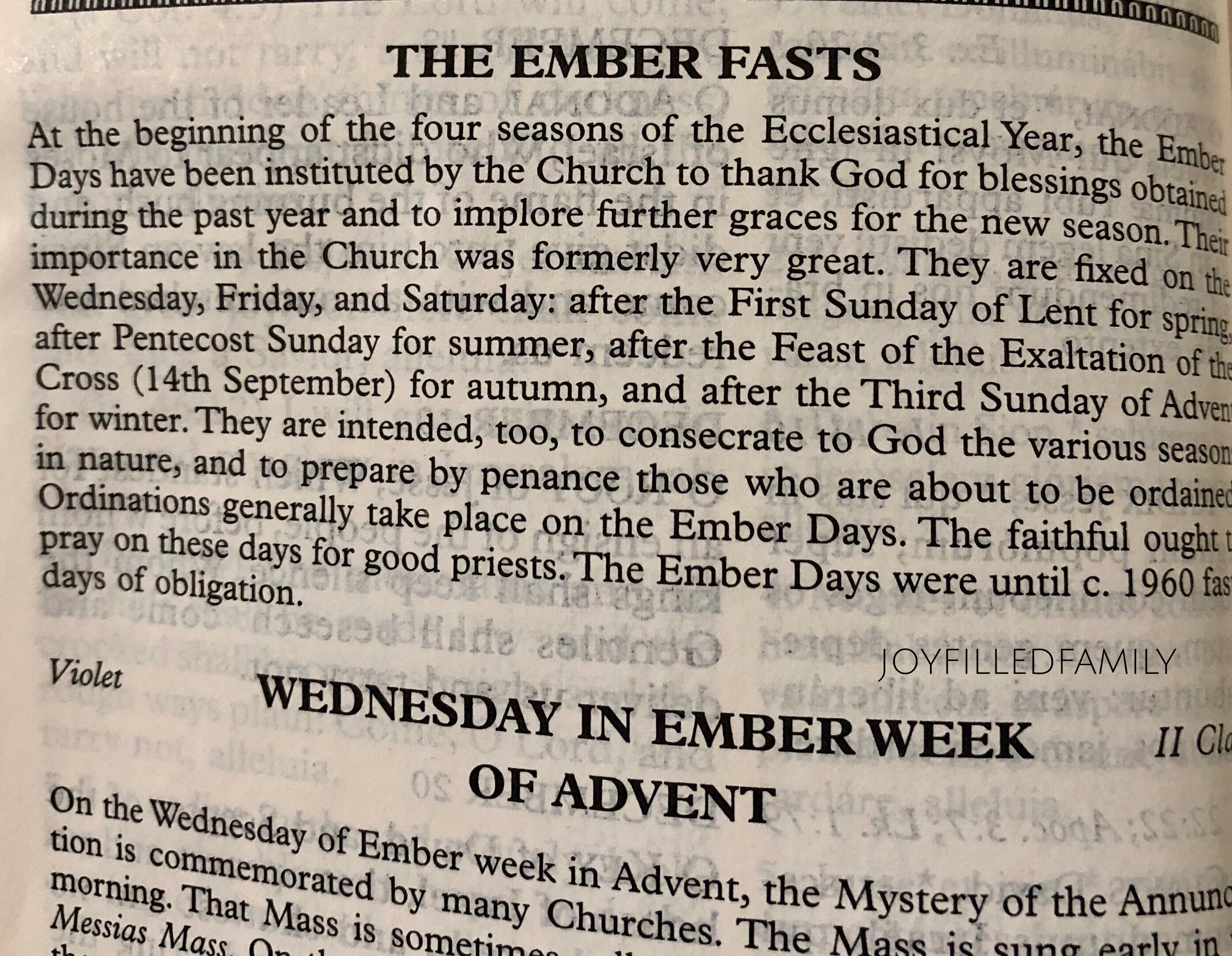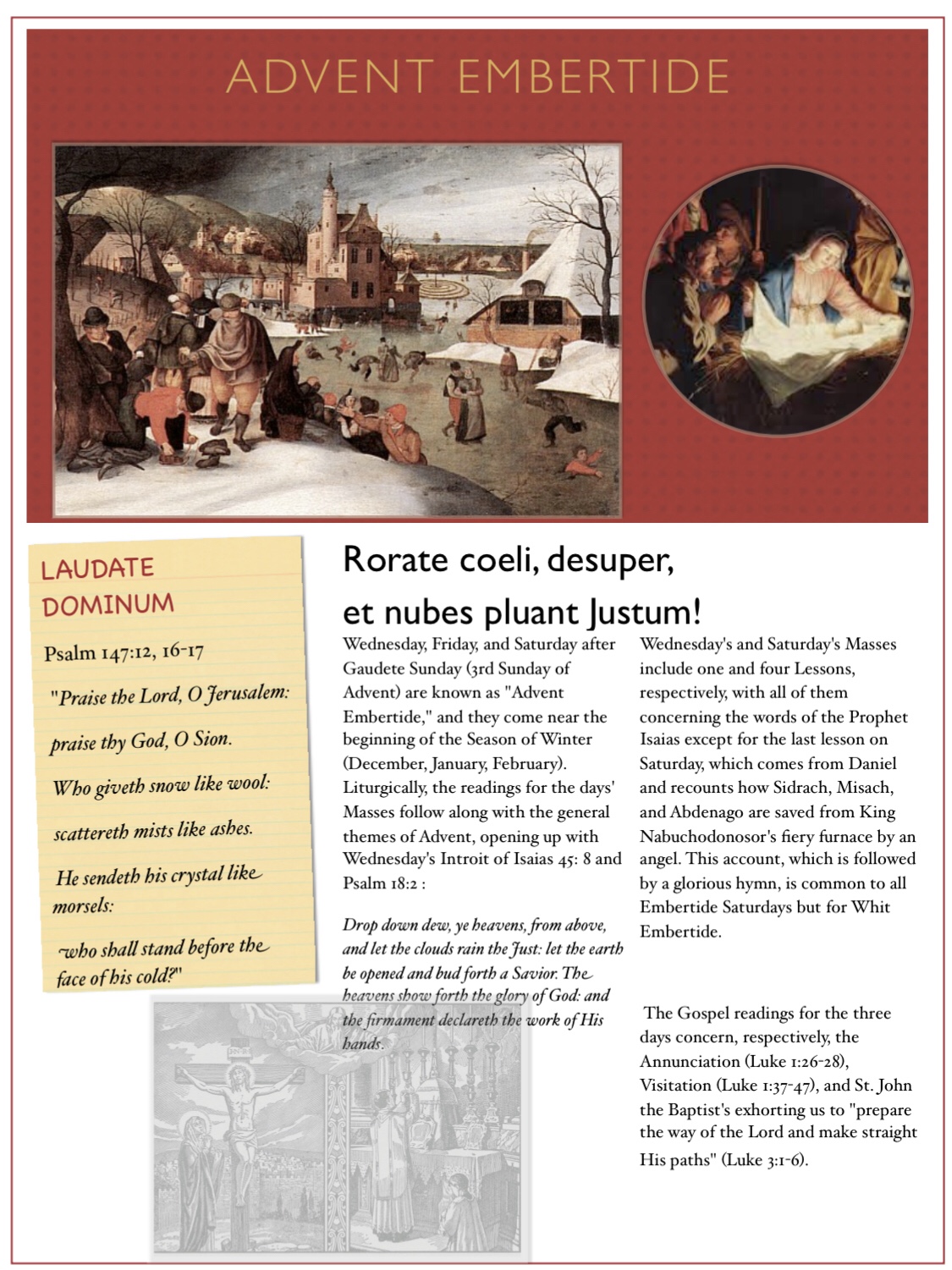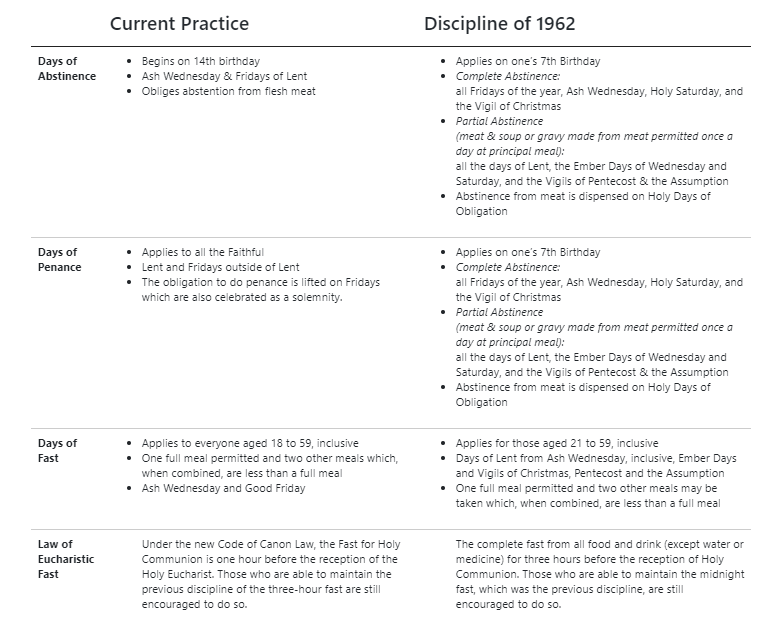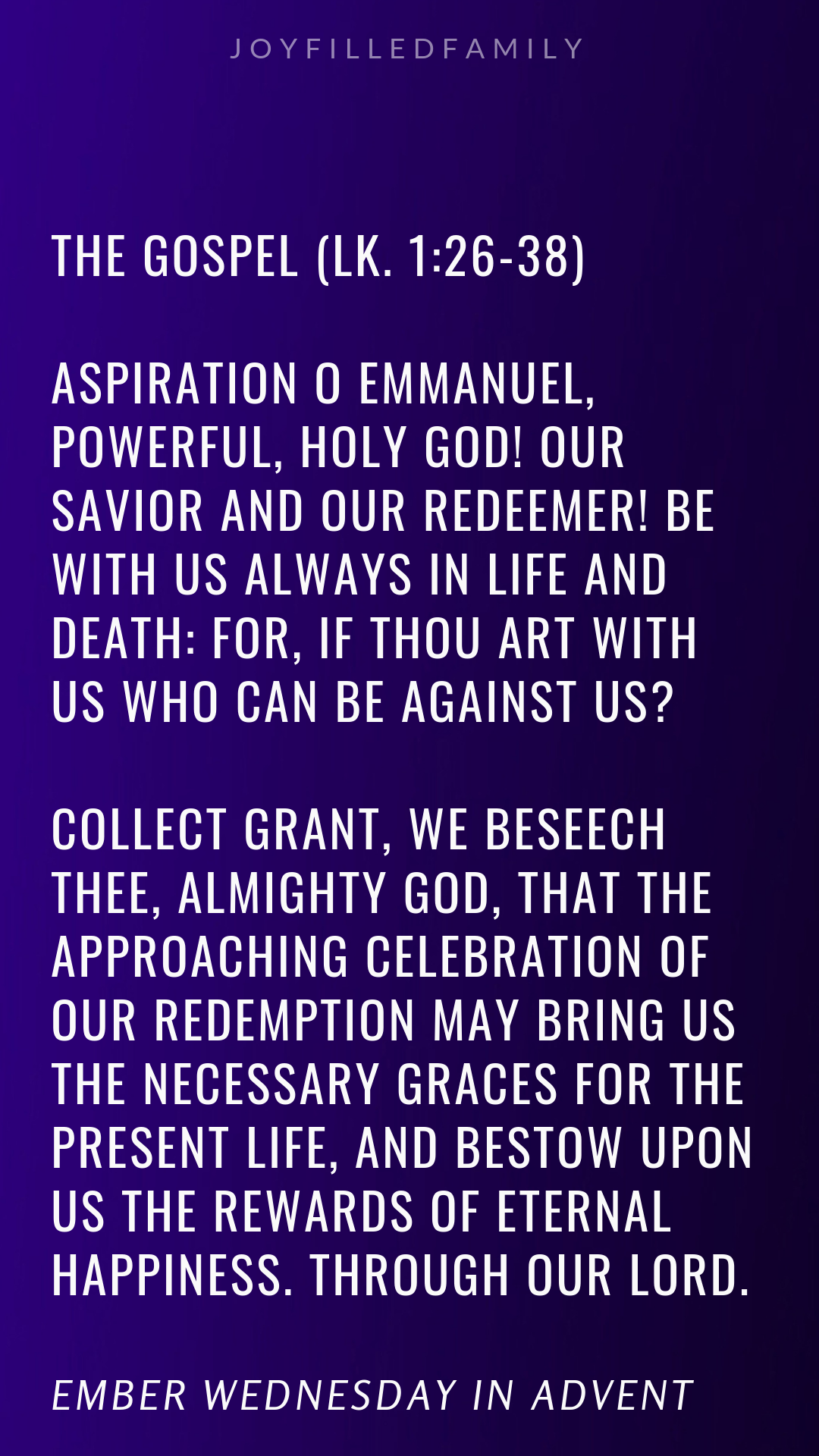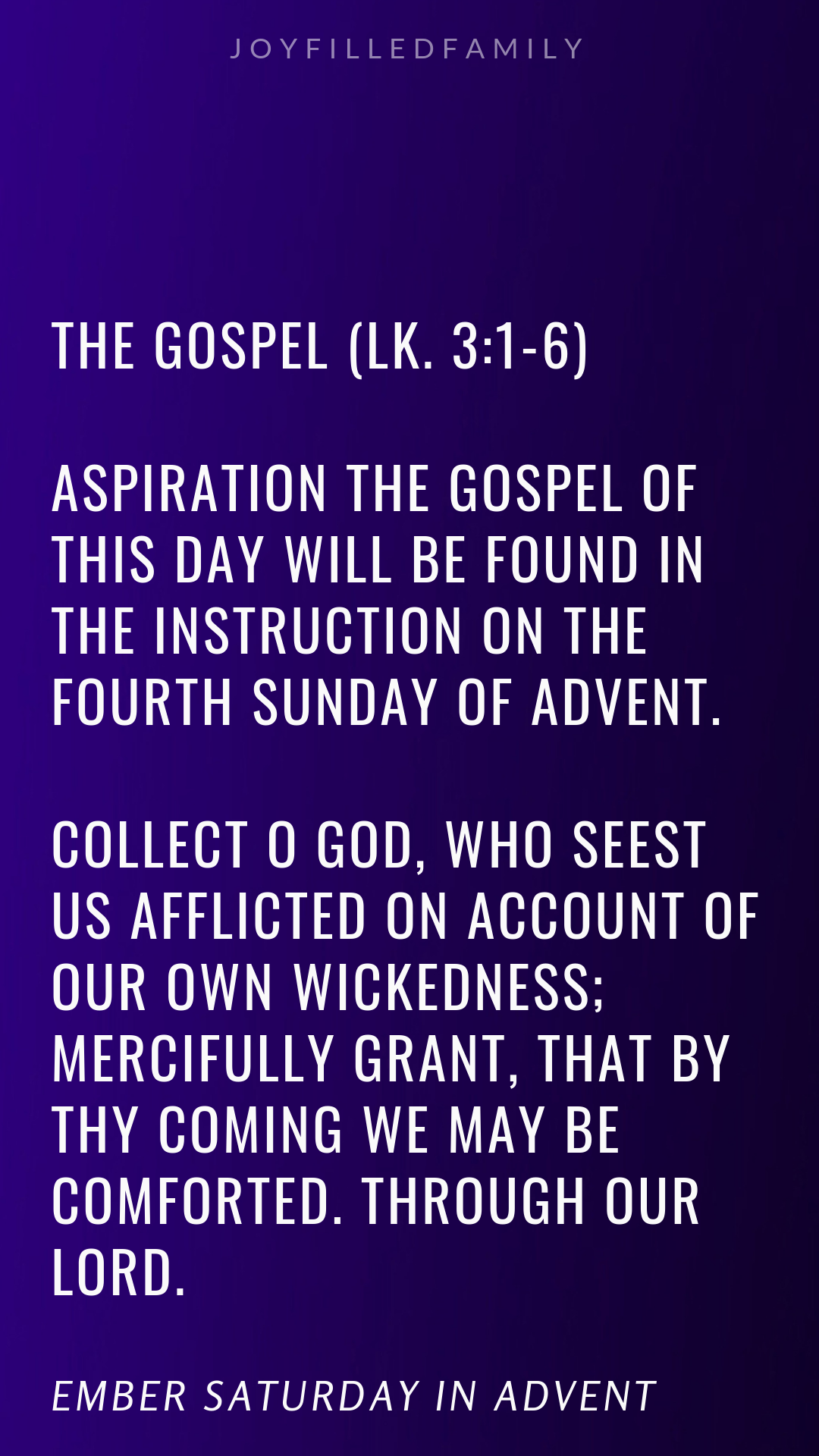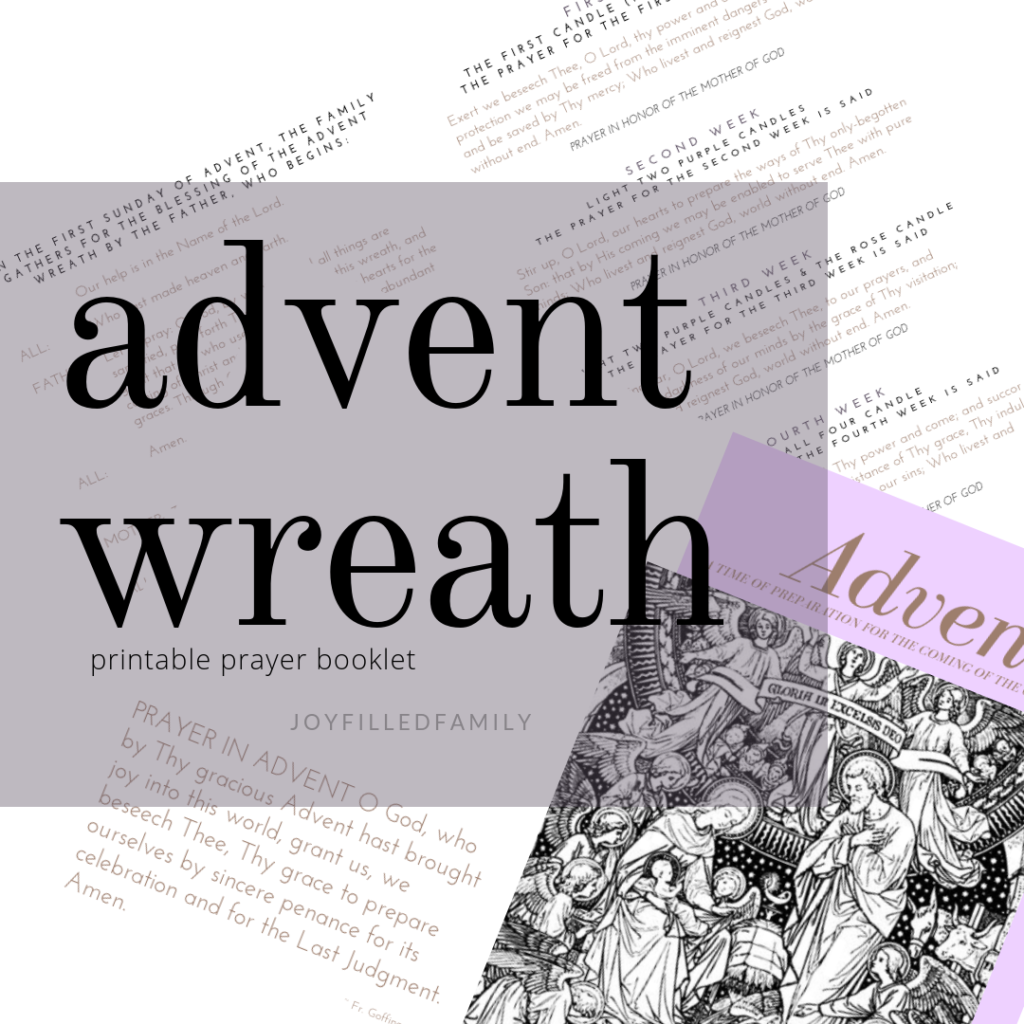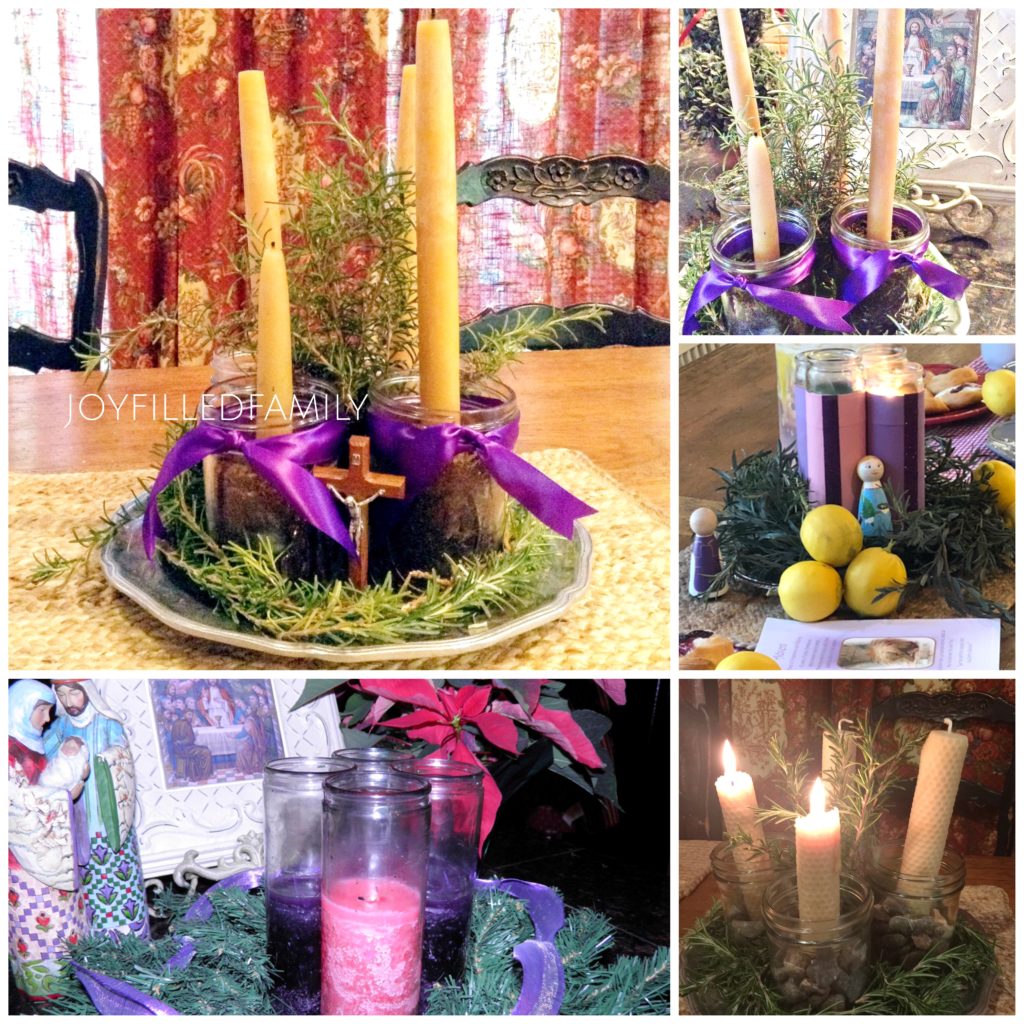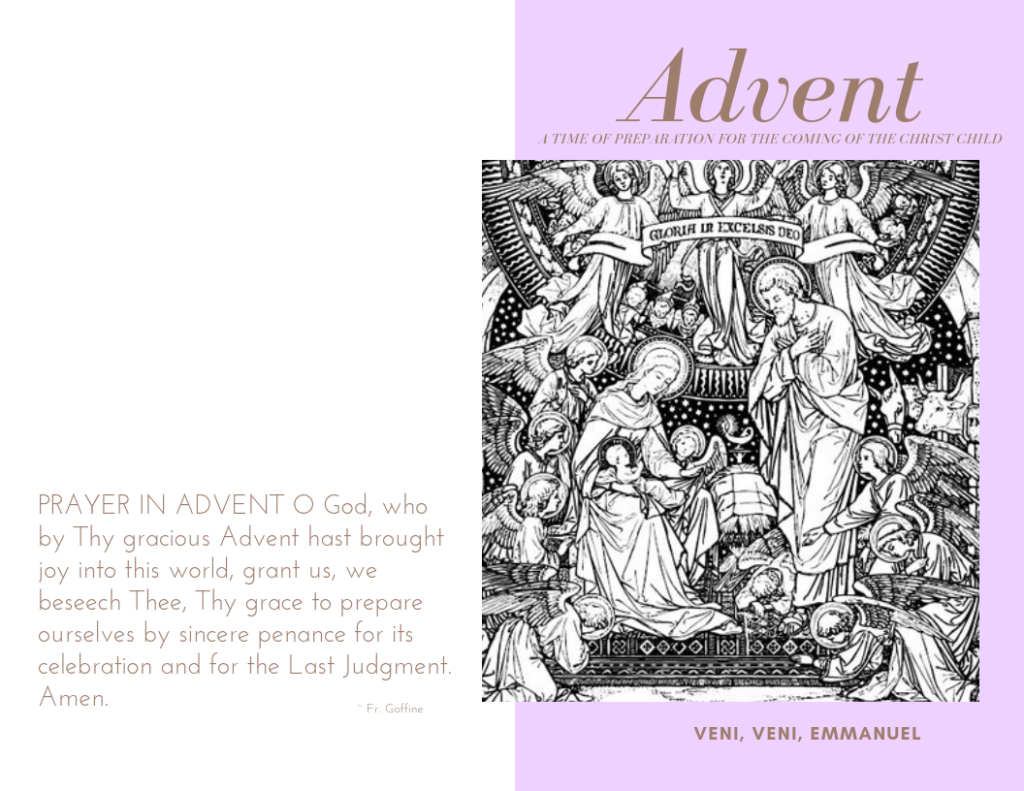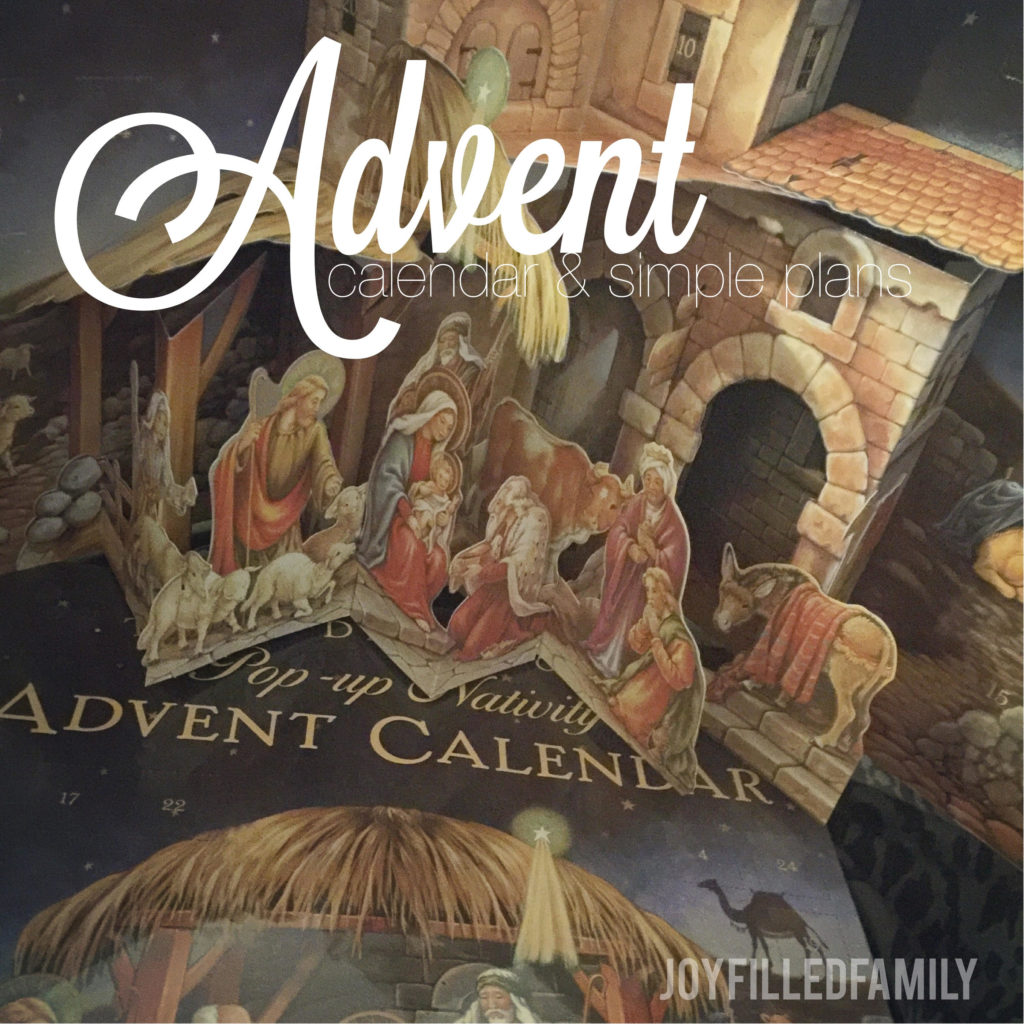This week contains the Advent Ember Days, which always fall on the Wednesday, Friday and Saturday of the third week of Advent. The Ember Days take place four times a year, the other occasions being the weeks after Ash Wednesday and Pentecost and the third week of September. The purpose of the Days is to thank God for the gifts of Creation, to ask His help in using them with wisdom and moderation, and to assist those in need, and they are observed by fasting and prayer in addition to the particular liturgies the Church assigns them.
Learn more about Ember Days here.
